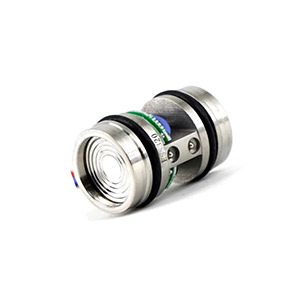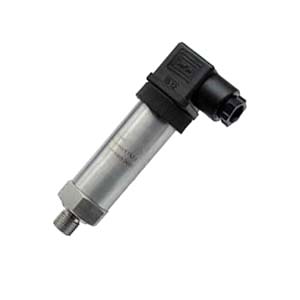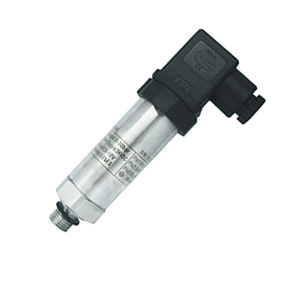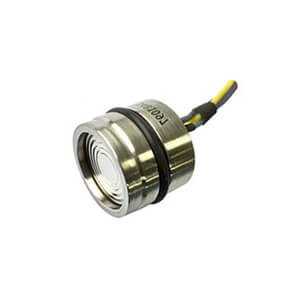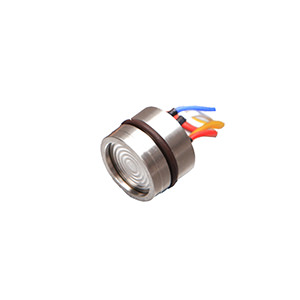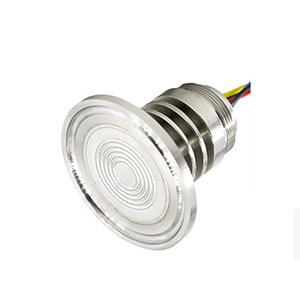What is Barometric pressure sensor?
A barometric pressure sensor, also known as a barometer or atmospheric pressure sensor, is a device that measures the pressure exerted by the Earth’s atmosphere. Atmospheric pressure varies with altitude and weather conditions, and it is an important parameter in various applications such as weather forecasting, aviation, altitude detection, and indoor air quality monitoring.
Barometric pressure sensors work by converting the pressure of the surrounding atmosphere into an electrical signal that can be processed and interpreted by a microcontroller or other electronic systems. These sensors typically use technologies such as piezoresistive, capacitive, MEMS, or optical sensing elements to detect pressure changes and generate an output signal.
In simple terms, a barometric pressure sensor measures the weight of the air above it, providing valuable information about atmospheric conditions and helping to predict weather changes or determine altitude. This data is crucial for a range of industries and applications, making barometric pressure sensors an essential component in many systems.
How Barometric pressure sensor works
As the common pressure sensor, barometric pressure sensors work also by converting atmospheric pressure into an electrical signal that can be interpreted by electronic systems. There are several technologies used in these sensors, I’ve listed the outline as below, for more details for each, please click to check.
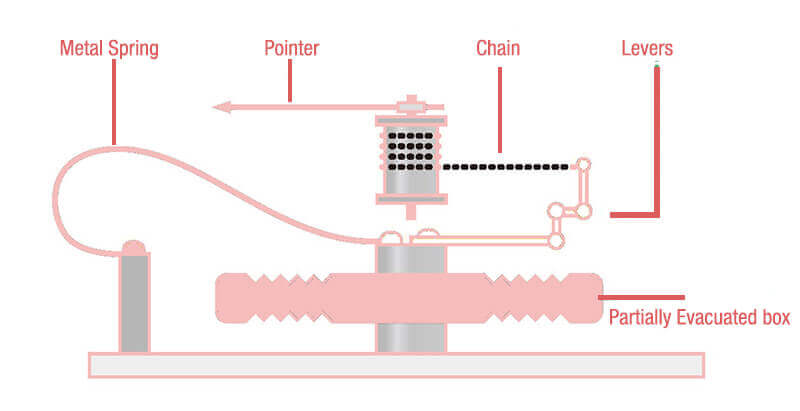
Piezoresistive:
Piezoresistive sensors rely on a sensing element, usually made of silicon or other semiconductor materials, that changes its electrical resistance in response to applied pressure. As the atmospheric pressure varies, the diaphragm in the sensor deforms, causing a change in the resistance of the piezoresistive material. This change in resistance can be measured and translated into pressure values.
Capacitive:
Capacitive sensors use a diaphragm that changes the capacitance between two conductive plates when pressure is applied. As the atmospheric pressure increases or decreases, the diaphragm moves, altering the distance between the plates and thus changing the capacitance. This change in capacitance can be measured and correlated to atmospheric pressure.
MEMS (Micro-Electro-Mechanical Systems):
MEMS sensors are miniature devices that integrate both mechanical and electrical components on a single chip. In a MEMS-based barometric pressure sensor, a tiny diaphragm moves in response to pressure changes, causing a measurable change in electrical properties, such as capacitance or resistance. MEMS sensors can be made using various techniques, including piezoresistive or capacitive sensing.
Optical:
Optical barometric pressure sensors use light to measure pressure changes. One common method involves measuring the displacement of a diaphragm or other pressure-sensitive element using a light source and a photodetector. As the atmospheric pressure changes, the diaphragm’s position shifts, causing a change in the light path or intensity, which can be measured and correlated to the pressure.
These different technologies convert atmospheric pressure into an electrical signal that can be processed, calibrated, and interpreted by microcontrollers or other electronic systems. The output signal can be used for various applications, such as weather forecasting, altitude detection, and indoor air quality monitoring.
What is the difference between Barometric pressure sensor an air pressure sensor, a gauge pressure sensor
Barometric pressure sensors, air pressure sensors, and gauge pressure sensors are all types of pressure sensors, but they measure pressure differently and serve distinct purposes. Here’s a brief explanation of their differences:
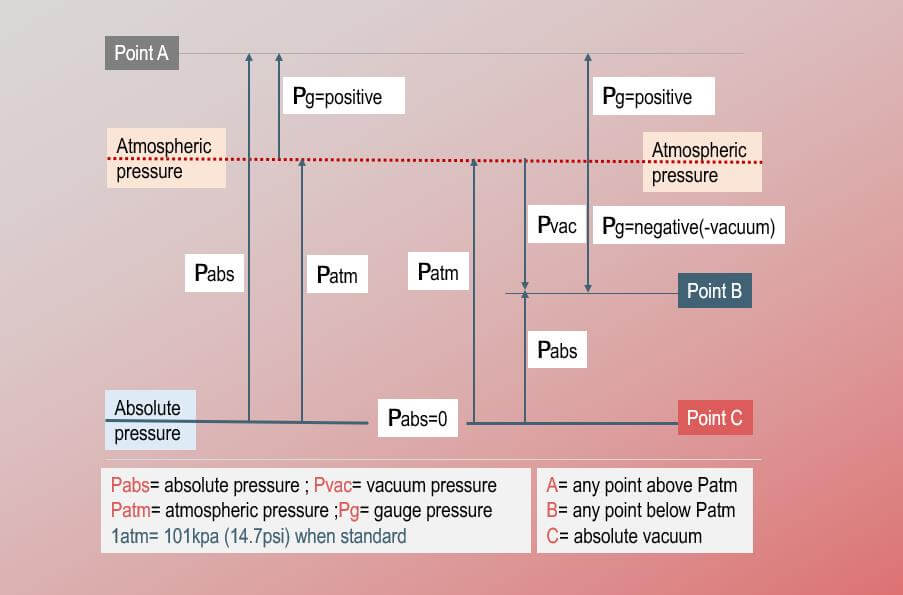
Barometric pressure sensor:
Also known as an atmospheric pressure sensor, it measures the pressure exerted by the Earth’s atmosphere at a specific location. These sensors are used in weather forecasting, altitude detection, and indoor air quality monitoring. The pressure measured by a barometric pressure sensor is called absolute pressure, as it is referenced to a vacuum (i.e., zero pressure).
Air pressure sensor:
This term is often used interchangeably with barometric pressure sensors since they both measure atmospheric pressure. However, it can also refer to any sensor measuring the pressure of air in various applications, such as HVAC systems or pneumatic controls. Depending on the context, an air pressure sensor could be measuring absolute, gauge, or differential pressure.
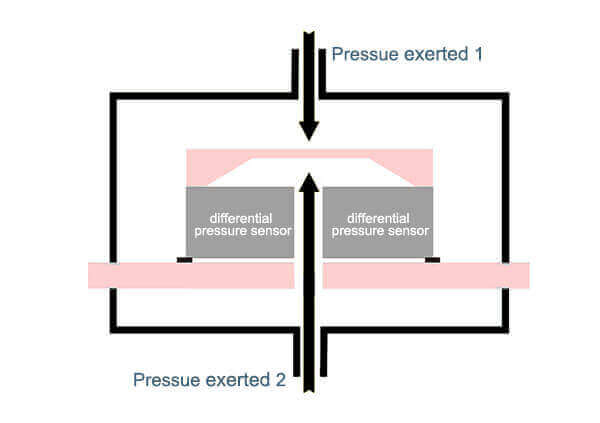
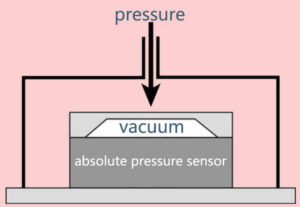
Gauge pressure sensor:
Gauge pressure sensors measure the pressure relative to the ambient atmospheric pressure at the measurement location. They are designed to measure the difference between the pressure of a specific substance (e.g., liquid or gas) and the surrounding atmospheric pressure. Gauge pressure sensors are widely used in industrial processes, fluid systems, and automotive applications. A positive gauge pressure value indicates that the measured pressure is higher than atmospheric pressure, while a negative value (also known as vacuum or negative gauge pressure) indicates that the measured pressure is lower than atmospheric pressure.
What should take into consideration when choose Barometric pressure sensor
When choosing a barometric pressure sensor, several factors should be taken into consideration to ensure the sensor meets the specific requirements of your application:
Pressure range:
Choose a sensor with a suitable pressure range for the environment in which it will operate. Barometric pressure typically varies between 800 to 1100 hPa (or mbar), but it’s important to select a sensor that can handle possible fluctuations in your application.
Accuracy and resolution:
Ensure that the sensor provides the required accuracy and resolution for your application. High-precision sensors may be necessary for critical applications like weather stations or altitude measurement, while lower-accuracy sensors might be acceptable for general-purpose use.
Temperature and humidity range:
Consider the operating temperature and humidity range of the sensor, especially if it will be exposed to extreme conditions. Some sensors may require temperature compensation to maintain accuracy over a wide temperature range.
Barometric pressure sensors employ various sensing technologies, such as piezoresistive, capacitive, MEMS, or optical. Each technology has its advantages and limitations, so choose the one that best suits your application requirements.
Output signal and electrical interface:
Select a sensor with an appropriate output signal (e.g., analog or digital) and electrical interface (e.g., I2C, SPI, 4-20 mA, or 0-10 V) compatible with your system.
Size and form factor:
Consider the physical size and form factor of the sensor, particularly if space is limited in your application or if it needs to be integrated into an existing system.
Media compatibility:
Ensure that the sensor’s materials are compatible with the gas or liquid being measured, as some sensors may not be suitable for use in harsh or corrosive environments.
Power requirements:
Check the sensor’s power consumption and supply voltage requirements, particularly if the sensor will be battery-powered or integrated into a low-power system.
Enclosure rating and protection:
Select a sensor with an appropriate enclosure rating and protection against ingress of dust, water, and other contaminants if it will be used in a harsh or outdoor environment
Cost and availability:
Consider the cost of the sensor and its availability in the market. High-performance sensors may be more expensive, so balance the cost with the performance requirements of your application.
What is the application for Barometric pressure sensor
Barometric pressure sensors have a wide range of applications across various industries and fields, including:
Weather stations and forecasting:
Barometric pressure sensors are used in weather stations to measure atmospheric pressure changes, which help predict weather conditions, including storms, high or low-pressure systems, and temperature changes.
Altitude detection:
Since atmospheric pressure decreases with increasing altitude, barometric pressure sensors can be used in devices like altimeters, GPS receivers, and drones to determine their elevation above sea level.
Indoor air quality monitoring:
Barometric pressure sensors can be used in HVAC systems and air quality monitors to control air pressure and ventilation, ensuring a comfortable and healthy indoor environment.
Aviation:
Aircraft rely on barometric pressure sensors to determine altitude, which is crucial for maintaining safe flight levels, navigation, and landing procedures.
Mobile devices and wearables: Smartphones, smartwatches, and other wearable devices often include barometric pressure sensors for various purposes, such as activity tracking, altitude measurement, or weather-related features.
Marine applications:
Barometric pressure sensors are used in marine environments for weather monitoring, navigation, and safety purposes, such as detecting storms or determining sea levels.
Agriculture:
Farmers and agricultural researchers use barometric pressure sensors to monitor weather conditions, which can influence crop yields, irrigation systems, and pest control strategies.
Sports and recreation:
Barometric pressure sensors can be found in outdoor and sports equipment, such as handheld GPS devices, sports watches, and bicycle computers, to measure elevation changes and enhance performance tracking.
Laboratory and research:
Scientists and researchers use highly accurate barometric pressure sensors for various experiments, atmospheric studies, and calibration of other instruments.
Barometric pressure sensors can be found in some automotive applications, such as engine control modules, to optimize engine performance based on altitude and atmospheric pressure.
What is the limitation for the Barometric pressure sensor
While barometric pressure sensors provide valuable information and have numerous applications, there are certain limitations that should be considered:
Accuracy and resolution:
The accuracy and resolution of a barometric pressure sensor can vary depending on the sensing technology and the quality of the sensor. High accuracy and resolution may be required for certain applications, but achieving this level of performance may come with a higher cost.
Temperature and humidity sensitivity:
Barometric pressure sensors can be sensitive to changes in temperature and humidity, which can affect their readings. Some sensors may require temperature and humidity compensation to maintain accuracy over a wide range of operating conditions.
Drift and stability:
Over time, some barometric pressure sensors may experience drift, which can cause a change in the sensor’s output even if the actual pressure remains constant. This can be due to factors like aging, mechanical stress, or temperature fluctuations. Choosing a sensor with good long-term stability can help mitigate this issue.
Response time:
The response time of a barometric pressure sensor refers to how quickly it can detect changes in pressure. Some applications, like weather forecasting or altitude detection, may require faster response times, while others may not be as time-sensitive.
Environmental influences:
Barometric pressure sensors can be affected by environmental factors such as dust, dirt, moisture, and vibrations. Proper sensor selection and protection measures should be taken to ensure reliable performance in harsh environments.
Power consumption:
Some barometric pressure sensors, especially those with higher accuracy and faster response times, can consume more power. This can be a concern for battery-powered or energy-constrained applications.
Size and form factor:
While many barometric pressure sensors are compact and lightweight, some applications may require even smaller sensors or specific form factors, which can be challenging to accommodate.
Calibration and maintenance:
Depending on the sensor and application, periodic calibration and maintenance may be required to ensure optimal performance and accuracy.
By understanding these limitations and carefully selecting the appropriate sensor for your application, you can overcome many of these challenges and achieve reliable and accurate pressure measurements.
Wrap up
Barometric pressure sensors are essential components in various industries and applications due to their ability to measure atmospheric pressure changes. They play a crucial role in weather forecasting, altitude detection, indoor air quality monitoring, aviation, mobile devices, marine applications, agriculture, sports and recreation, laboratory research, and automotive systems. However, there are some limitations to consider when selecting and using these sensors.

